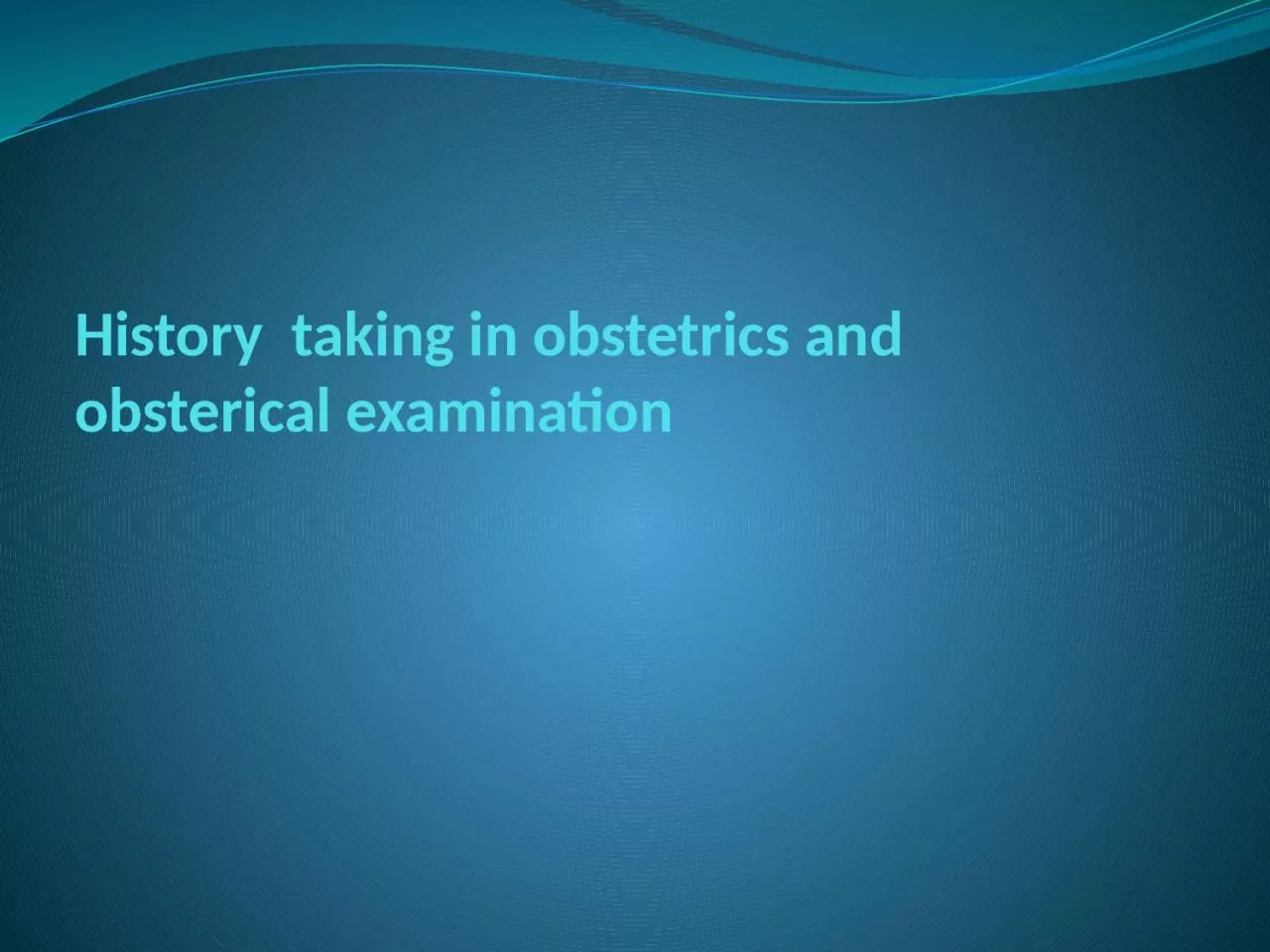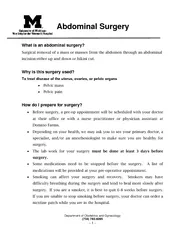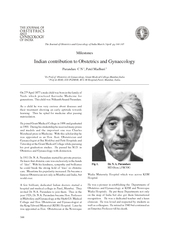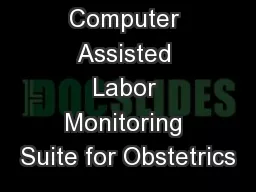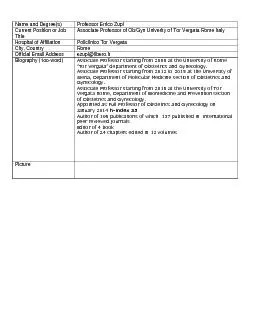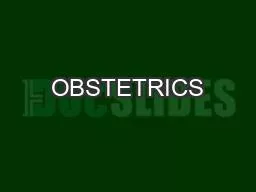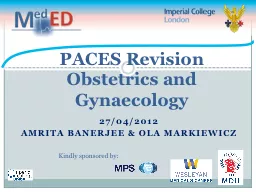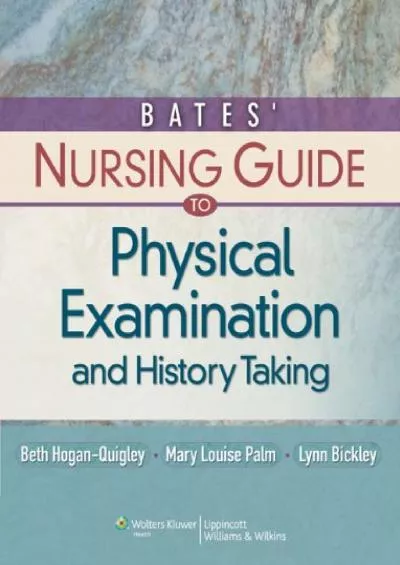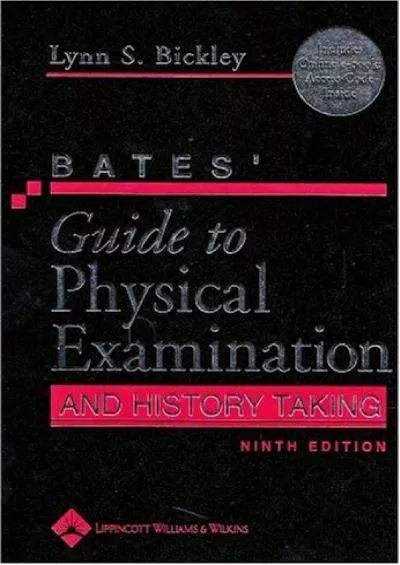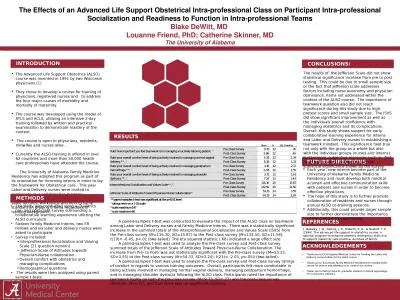PPT-History taking in obstetrics and
Author : Princecharming | Published Date : 2022-08-04
obsterical examination Essential etiquettes Seek permission to enter the area where the patient is Be very careful with the dress code Make sure you are wearing
Presentation Embed Code
Download Presentation
Download Presentation The PPT/PDF document "History taking in obstetrics and" is the property of its rightful owner. Permission is granted to download and print the materials on this website for personal, non-commercial use only, and to display it on your personal computer provided you do not modify the materials and that you retain all copyright notices contained in the materials. By downloading content from our website, you accept the terms of this agreement.
History taking in obstetrics and: Transcript
Download Rules Of Document
"History taking in obstetrics and"The content belongs to its owner. You may download and print it for personal use, without modification, and keep all copyright notices. By downloading, you agree to these terms.
Related Documents

